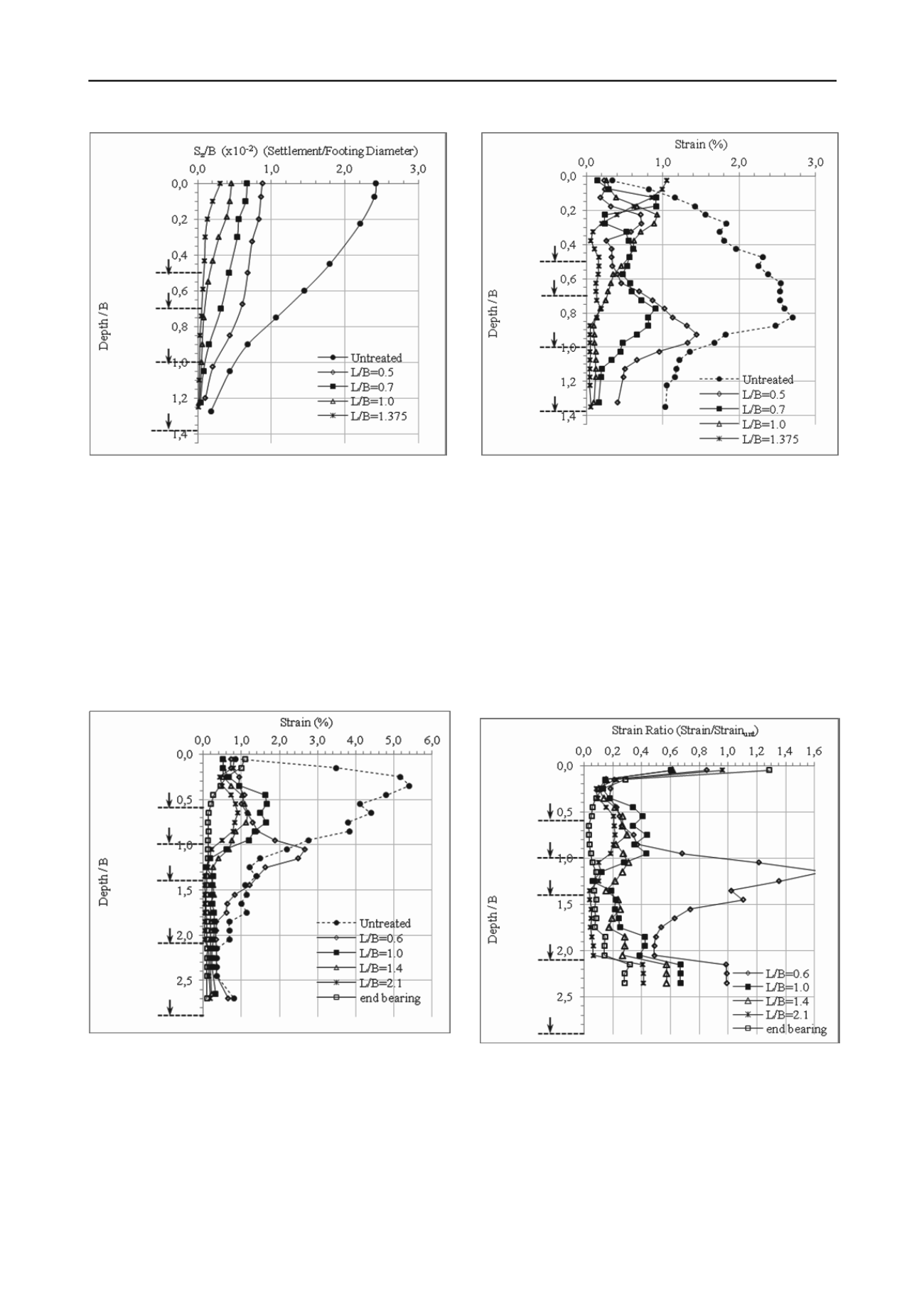
971
Technical Committee 104 /
Comité technique 104
Figure 3. Normalized settlement versus normalized depth graphs of
Series IV and V (B = 200 mm, 75 kPa)
The strains at every cm depth interval are determined from
the settlement-depth graphs obtained with LVDT and miniature
magnetic switch apparatus measurements and then plotted as
strain vs. normalized depth graphs as illustrated in Figure 4 and
Figure 5.
In floating granular columns, the efficiency of column
length of L/B=1.0 to 1.2 is observed in strain vs. normalized
depth graphs shown in Figure 4 and Figure 5. It is obvious that
they reduce the strains considerably throughout their length
when compared to those in the untreated case. They also
manage to decrease the strains in underlying clay layer
significantly.
Figure 4. Strain versus normalized depth graphs of Series I and III
(B = 100 mm, 75 kPa)
However, a trend of increasing strains is observed in clay
layer starting from the end of column under the columns shorter
than L/B=1.0. Strains make a peak and then decline (L/B=0.6
with B=100 mm plate and L/B=0.5 and L/B=0.7 with B=200
mm plate). In the test Series III (B=100 mm) with L/B=0.6
these peak strains are even higher than those in the untreated
case for the same depth. All the findings show that the columns
shorter than L/B=1.0 are not adequate to reduce the strains in
clay layers underlying floating type granular columns.
end of column
end of column
L/B=0.5
L/B=0.5
L/B=0.7
L/B=1.0
L/B=0.7
L/B=1.0
L/B=1.375
L/B=1.375
Figure 5. Strain versus normalized depth graphs of Series IV and V
(B = 200 mm, 75 kPa)
Uppermost 0.2B to 0.3B depth of columns are strained in
end bearing columns, then strain value decreases and keep
constant till the end of column. The columns with L/B=1.375 in
test series V can also be considered as end-bearing columns.
Ratio of the strain values in the columns to those in the
untreated clay at the same depth are presented in Figure 6 and
Figure 7. Effectiveness of the ratio L/B=1.0 to 1.2 is again clear.
Strain ratios under short columns with L/B<1.0 length are
nearly the same as those in the untreated condition, in other
words L/B<1.0 column length is insufficient for settlement
reduction.
end of column
end of column
L/B=0.6
L/B=1.0
L/B=1.4
L/B=2.1
L/B=2.9 (eb)
L/B=0.6
L/B=1.0
L/B=1.4
L/B=2.1
L/B=2.9 (eb)
Figu
o versus normalized depth graphs of Series I and III
(B =
a)
re 6. Strain rati
100 mm, 75 kP
In columns with L/B>1.0 length, columns contribute to strain
reduction in the clay soil underneath till 2.0 B depth. The
increase in strain ratio after 2.0 B implies that cumulative
settlement decreases considerably below 2.0 B in the untreated
cases so that any improvement effort has no contribution to
settlement reduction below this depth. This also explains
similarities in the behavior of L/B=2.1 floating and end bearing
columns.


